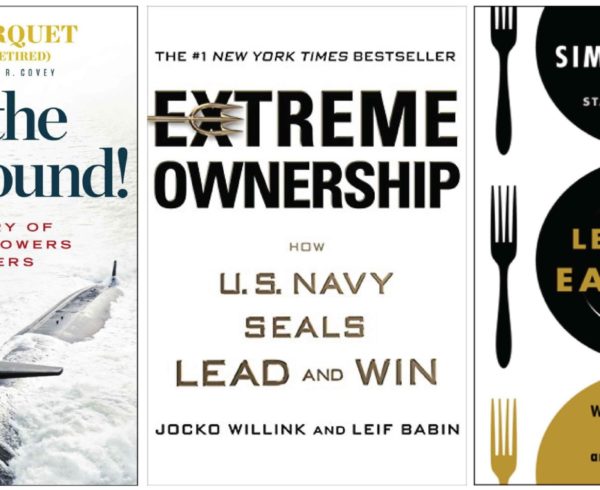 For nearly three decades in the public relations business, I have had the pleasure of working with some great entrepreneurs and businesspeople.
For nearly three decades in the public relations business, I have had the pleasure of working with some great entrepreneurs and businesspeople.
The firm’s goals have remained the same: we seek to secure media coverage to build a person’s brand, reputation and attract attention. Building a brand takes time. In the past I have discussed the questions you need to ask to define your brand and I have outlined what is needed in your personal marketing plan.
With so many ways to promote your brand and with so many places online where your brand resides, a challenge surfaces: consistency. Is your brand image and message consistent across all the digital properties that you own? Does this “online brand” match how you present yourself in the real world? I bet some readers have not even thought of this.
It doesn’t matter whether you are a social media marketer using social media for your brand, business or if you are just a casual user of social media. Guess what? You have an online brand and you need to know how you are presenting yourself. For those of you who are not practitioners of social media, you cannot escape either. Even when you don’t have social media accounts of your own, your name is probably online on your company’s website, in directories of the groups that you belong to or perhaps in the media. Have you ever searched for your name? Have you searched for it recently? If not, you should. You need to see how your brand is represented online and what people are saying about you. Are people making positive comments, negative comments are they not saying anything at all? Search for your name in Google (and other search engines) to see what comes up. Search down a few pages and make notes of what you find. Search Google Images; does your image come up? Is it an old image? Is the image unflattering? Again, take notes and click on the images, where are they being pulled from? Perhaps images are coming from social media sites such as LinkedIn or Facebook or a newspaper or organizations to which you belong.
Tip: for Gmail/Google Plus users – you can create what is known as Google Alerts. These are Google searches that are done daily or periodically for search terms that you want to monitor. Put your name into the Google Alert system and if your name is mentioned you will get an alert. There is more to this, but begin by creating an alert with your name or, more specifically, your name in quotes such as “Bill Corbett.” This tells Google to search just for your name. If you have a relatively common name like I do, I suggest adding additional words to your search. I use “Bill Corbett” “Public Relations.” This narrows down my search and gets better results – not all the results of all the other Bill Corbett’s in the world. There are quite a few of us by the way.
Now that you are monitoring your brand, it is time to look at the consistency of your brand. Do you have an elevator speech? Do you have a personal mission statement that you share with people you meet? Do you have an area of expertise that you discuss in the real world? Your answer to all of these questions is likely to be “yes.” How about this question: do you have a certain style of dress or a “look” that you are known for? If you don’t have a specific look, you can be sure the way you present yourself professionally will not go unnoticed. Your message, your mission and the way you look and present yourself needs to be the same (consistent) online as it is in the real world. Your headshots and images need to be professional and consistent. Every written profile also needs to reflect a similar message. Certainly your LinkedIn profile will provide much more information than a Twitter profile, but stay consistent. The graphics and the videos you use must also be consistent. Video is by far the best bridge between the real world and the cyber world. If you can convey on video your brand and message, you are doing it right. Be aware that video is tricky; poor quality videos (poor lighting, poor audio and an awkward presentation) can hurt you and your brand, especially if you are sharp and clear in the real world. Keep an eye on your videos.
Your bios, profiles and content needs to be consistent with your messaging. Think about what you post and the subject matter. If you are a banker or financial services professional, is posting marketing-related content consistent with your brand? If you are a medical professional, are posts about movies and TV appropriate? When using social media for business you must consider these factors. It is not the same if you are using social media to communicate with friends and family. However, in today’s world the lines between what is business and what is personal (for the most part) has faded away. Remember, if you’re online you are representing your brand at all times. You should expect anything and everything you post to be seen by everyone. So if you don’t want friends, employers, prospects, clients or others to see what you are doing, don’t post. In some cases you may not have a choice; friends and others can and will post images of you and mention your name. Again, this is why you need to monitor your brand regularly.
A poor or inconsistent image can result from simply not having your image or content on a LinkedIn, Twitter or other accounts. How does this look to someone you met at a networking event or the person you were introduced to by a friend as a referral? When you don’t bother to project your brand image to prospects, you damage the potential for establishing a business relationship. It’s better not to have an account than to have a blank one. It is shocking to me to see how many networkers and salespeople don’t have completed profiles on LinkedIn. Think of the opportunities you have lost or how this looks when compared to you competition. You’re not looking good online even though you are very impressive in the real world.
Your brand message and image must be consistent in the real world as well as in the cyber world. Take the time to review where your brand resides online and make sure that it is consistent with your real world image. Keep your content consistent and you will be rewarded with a stronger and more effective brand.
By Bill Corbett









Leave a Comment